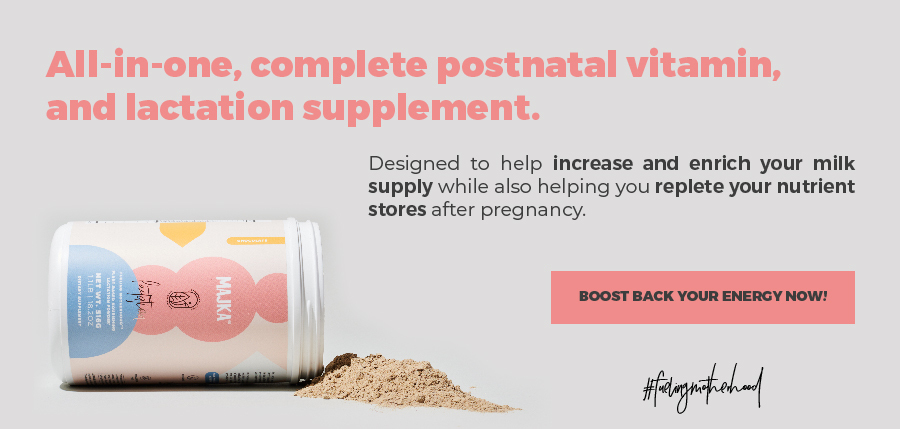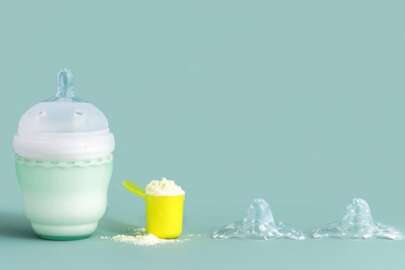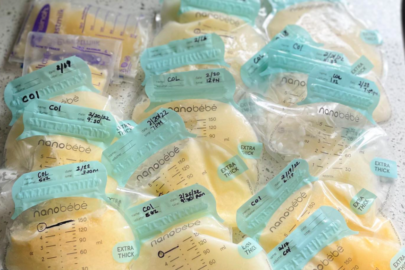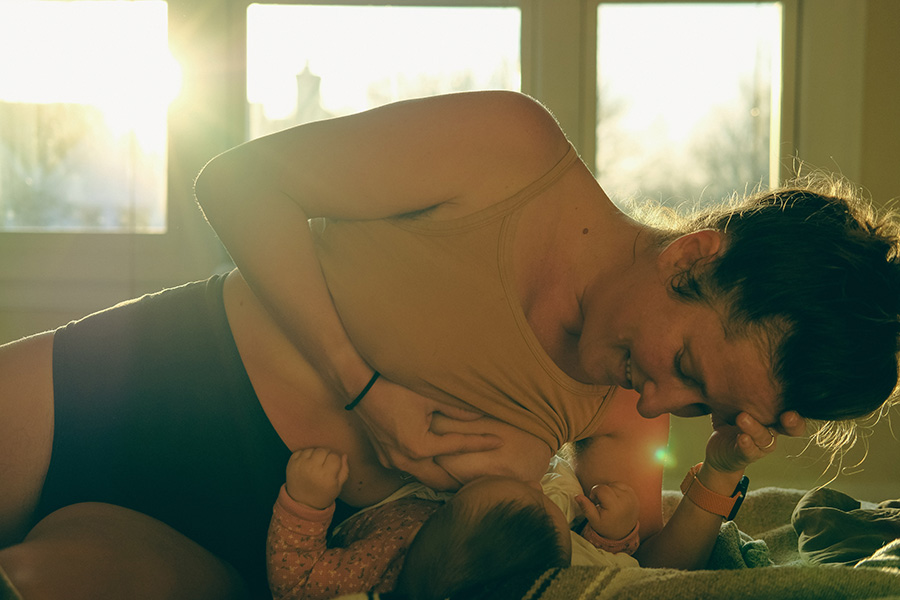
In the beginning, positioning the baby correctly at the breast is so important. Once the baby starts to get a little bit older, they tend to take the lead on how they position their body at the breast. But in the beginning, in order to encourage efficient and comfortable milk removal, proper breastfeeding positions can play a big role.
For all breastfeeding positions, try to remember, “tummy to tummy” and “nose to nipple”. Turn the baby so their stomach is facing your body and their nose is lined up with the nipple. Their body should be level with your breast. Often, the babies arms can “hug” around the breast. Their head is gently supported at the base of the head/neck and between the shoulder blades. The head is never held tightly or pushed towards the breast. Often a baby’s head can be very sensitive after delivery, so it is important to be very gentle and respectful of their head. With gentle support, their head needs to lean back into a “sniffing” position when latching.
Once latched, the chin is touching the breast and there is space between their chin and chest. The baby’s ear, shoulder, and hip will also be in alignment. The most important part is that this is comfortable for the breastfeeding parent, and the baby is effectively transferring milk.
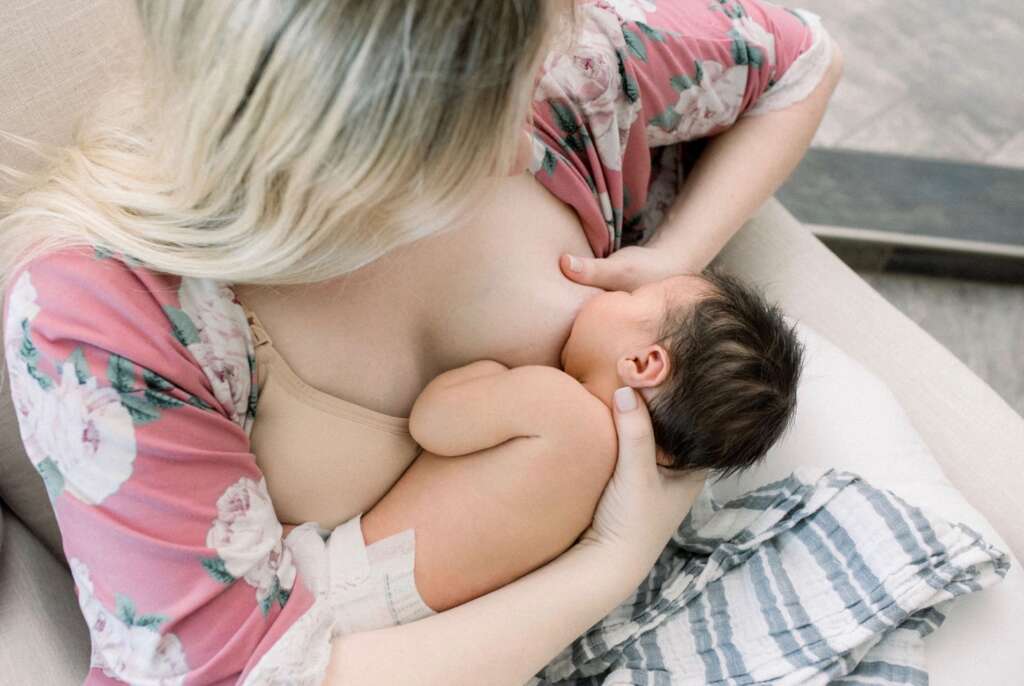
Cross Cradle hold
Cross cradle hold is a wonderful position to start with in the beginning. First, focus on starting with positioning your supporting arm (the arm opposite of the breast you intend to nurse on), across their back, long ways, and ending with your hand at the base of their neck with the palm in between their shoulder blades and fingers supporting the base and center of their head. Remember to be gentle with the head support.
In this position, the baby is laying across the mother’s body, and brought all the way to the breast so the mother is sitting in a comfortable position, not leaning over or turning to bring the breast to the baby. The baby is on their side, “tummy to tummy” and “nose to nipple”, arms hugging around the breast. The other arm, adjacent to the breast the baby is nursing on, can be used to support the breast and help guide the baby’s wide open mouth onto the nipple.
Once latched, the mother can lean back into even more comfortable breastfeeding positions, allowing the baby to stabilize on her body without a lot of strain or extra support.
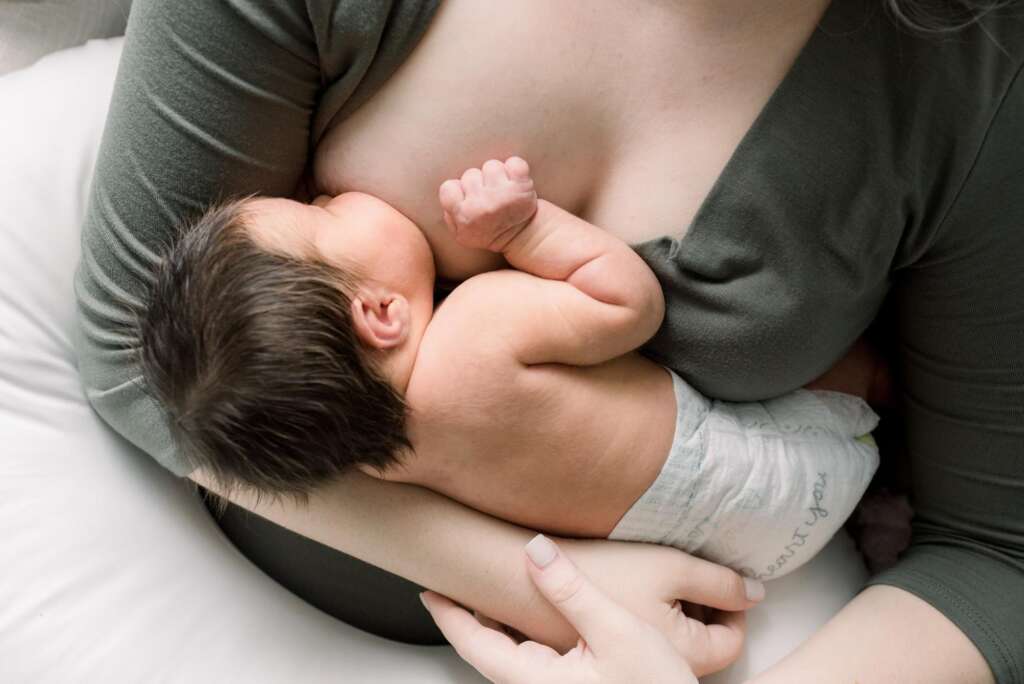
Cradle Hold
Cradle hold is one of the most comfortable and traditional breastfeeding positions. You can begin in a cradle hold, or transition from cross cradle to cradle. To start with cradle hold, the baby is held and supported by the arm adjacent to the breast that the baby will nurse on. The arm is bent and the baby’s head rests in the nook of the elbow, “cradling” the baby. The forearm and hand is used to support the baby’s body. The other hand can be used for breast support. The baby’s body is level with the breast, “tummy to tummy” and “nose to nipple”.
If the baby is latched in a cross cradle hold, the mother can gently bring the arm adjacent to the breast under the baby’s head and body. The elbow is bent and “cradling” the baby. The other arm can then release the hold on the baby and be used for breast support, additional support of the baby, or just rest.
In cradle hold, the mother can lean back, allowing gravity to aid in keeping the baby supported on the mother and latched to the breast.
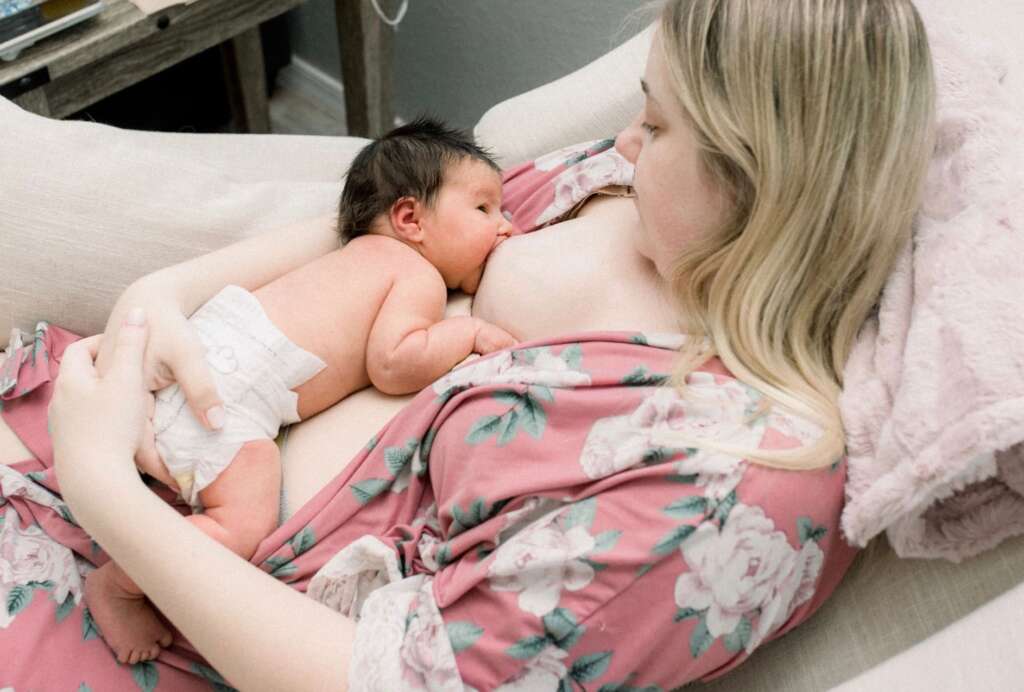
Reclined Cradle or Laid Back Position
Reclined cradle or laid back position is one of the most natural breastfeeding positions out there. This allows the baby to engage a lot of their primitive reflexes that help engage healthy breastfeeding responses. In this position, the breastfeeding mother is laid back at a 15-65 degree angle. The baby is placed on the mothers chest, across her body. As in all other positions, the baby is “tummy to tummy” and “nose to nipple”. Because this position engages primitive reflexes, often if the nipple is near the baby, they will be able to latch. Because the mother is laid back, gravity is keeping the baby on the mother allowing both mother and baby to be comfortable and supported.
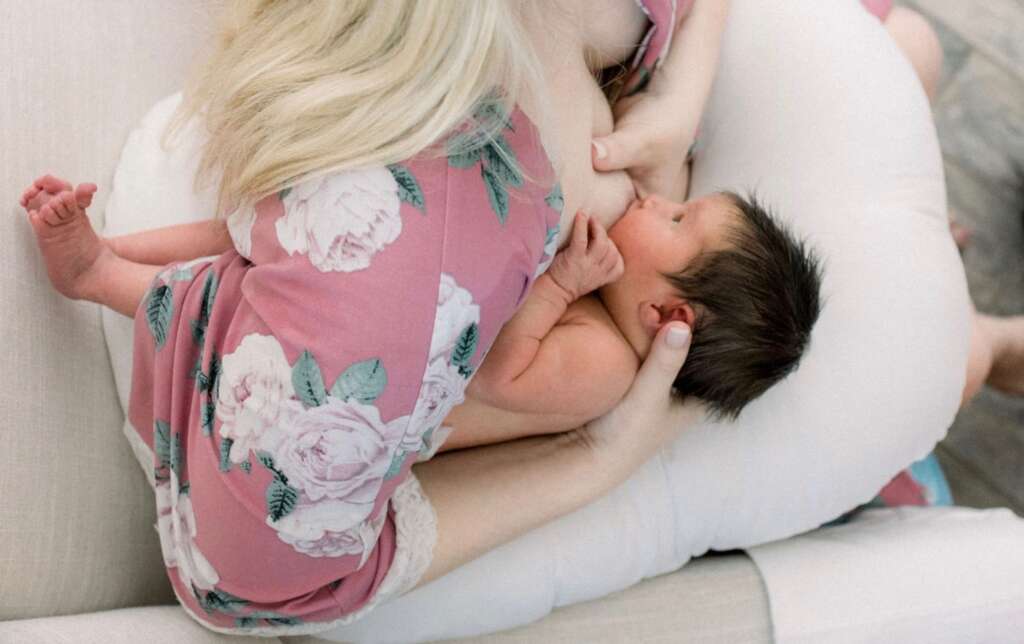
Football Hold
Football hold is a great position right after delivery, especially if there was a cesarean birth, maternal medications after delivery that may be causing drowsiness, or there was a long labor and the mother is sleepy. This position is supported by a lot of pillows which puts less strain and pressure on the mother’s body. Pillows are placed on the side of the mother and used to bring the baby level to the breast.
Gentle support of the baby’s head is given by the arm and hand next to the breast the baby will nurse on. This hand will help to gently guide the baby to the breast. The baby is on their side, “tummy to tummy” and “nose to nipple” on the side of the mothers body. In order to have the nose in line with the nipple, the baby’s body will wrap around the side of the mother and the legs will be near the mother’s back.
The goal of this position is comfort and support, allowing the mother to not have to engage a lot of her muscles and be able to rest.
Upright Position or Koala Position
Upright or Koala position can be very comfortable for the mother and baby. This position can help babies to get a deeper latch without them having to do as much work; therefore it is a great position to use if the baby is sleepy at the breast, has oral tension, jaundice, or it can be used well in a baby carrier too. Sit the baby up in a seated position. The baby’s legs will straddle the mother and arms around the breast, “tummy to tummy” and “nose to nipple” in an upright, seated position. The mother’s arm that is adjacent to the breast the baby is nursing on can provide support along the side of the baby’s head and mid back, if needed.
This position will engage a lot of the baby’s natural feeding reflexes. The mother can lean back comfortably in this position and maintain good neck/back posture techniques to reduce any body tension she may be having as well.
Side Lying Position
Side lying is a very comfortable position for the breastfeeding parent and baby. What you need is a firm surface to lay on. You will lay on your side with your arm used as your pillow. The breast closest to the surface you are laying on is the breast the baby will nurse from. The baby will lie down next to the mother on their side, “tummy to tummy” and “nose to nipple”. A small rolled up blanket can be placed behind the baby’s back to help support the baby and keep them on their side. You curl around the baby, creating a safe environment for the baby, and they are close and snug against your body. The available arm can be used to help guide the baby’s head to the breast and provide support to the breast or baby.
Written by Annie Rueb, RNC, IBCLC
Annie Rueb




